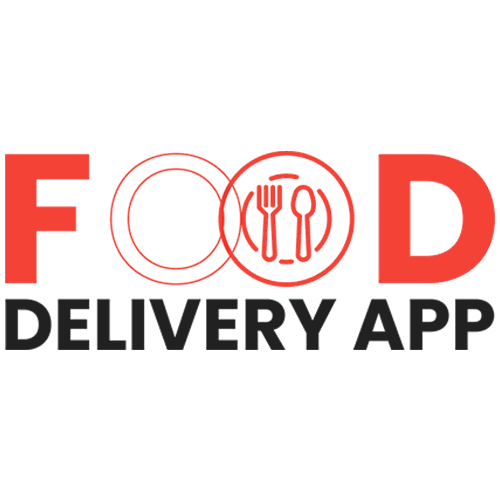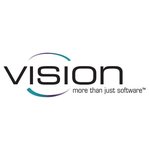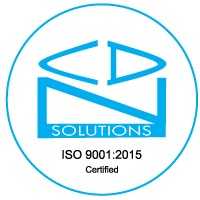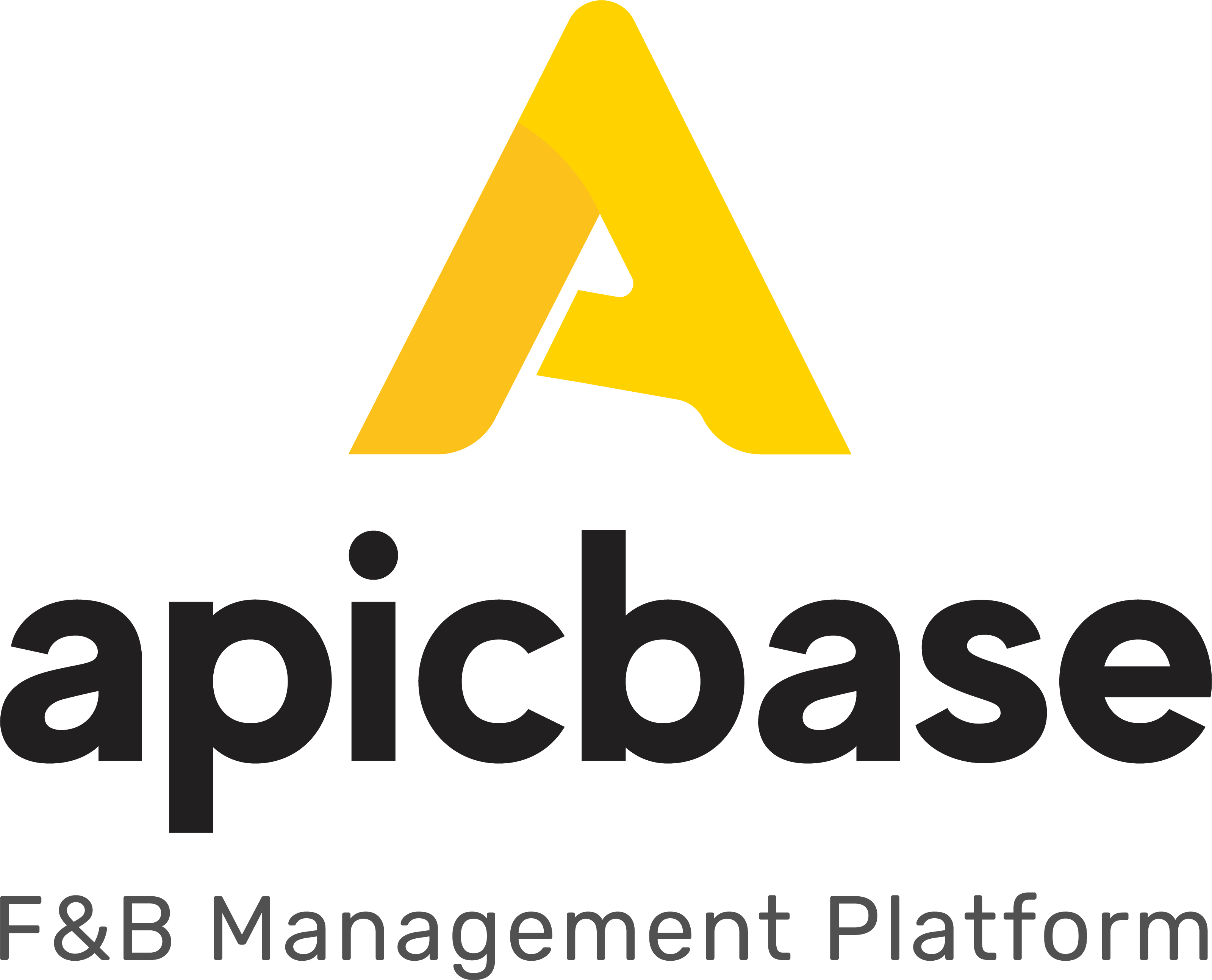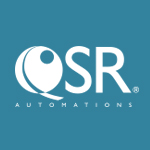What Is Food Service Management Software?
A strong tool for streamlining operations, increasing productivity, and eventually increasing profitability, food service management software is used by hotels, restaurants, and other food companies. Menu planning, inventory management, recipe management, staff scheduling, and client ordering and payment are just a few of the many features that this software offers.
Fundamentally, food service management software serves as the main link between every facet of a restaurant's operations. This program gives owners and managers vital information about their company through real-time data tracking and analysis, enabling them to make wise decisions and adjust to shifting market trends. Process simplification is one of the main advantages of utilizing food service management software.
This software lowers the possibility of human error by automating processes like inventory control and staff scheduling, giving workers more time to concentrate on other crucial business-related duties. By offering precise inventory tracking and cost analysis, food service management software also aids in cost control. This minimizes waste and ultimately saves money by ensuring that supplies and ingredients are ordered in the appropriate amounts and at the greatest pricing.
This software's capacity to improve the user experience is another essential component. Customers may place orders and pay with ease using online ordering and payment methods, which improves customer happiness and saves time.
The size and kind of your business, as well as the features and costs of various suppliers, should all be taken into account when selecting a food service management software. Purchasing the appropriate software can greatly increase your food service company's productivity and profitability.
What Are The Recent Trends In Food Service Management Software?
The food service sector has witnessed a dramatic change in recent years toward automation and digitization. As a result, there is now a greater need for effective and intuitive food service management software. To make an informed choice, it is essential for buyers to keep up with the most recent developments in food service management software.
The following are a few current trends in this category:
1. Cloud-Based Solutions: Cloud-based food service management software has become more popular as remote work and online ordering have grown in popularity. These technologies make it a convenient option for companies of all sizes by facilitating simpler access to data and real-time updates.
2. Mobile Applications: To enable users to run their businesses while on the go, a lot of food service management software now includes a mobile application. For managers and owners of restaurants who need to stay current while away from their computers, this tool is especially helpful.
3. Integration Of Artificial Intelligence (AI): AI is transforming food service management software. Businesses are using AI integration to improve customer experience and streamline operations by automating repetitive processes and analyzing consumer data for tailored marketing tactics.
4. Online Ordering And Delivery: Online food ordering and delivery has become more popular as a result of the pandemic. As a result, restaurants and other food service enterprises are increasingly using food service management software that incorporates online ordering and delivery capabilities.
5. Data Analytics: Food service management software now has advanced data analytics features due to the wealth of data available. This enables companies to make data-driven decisions by gaining insightful knowledge about their operations, including inventory management, sales trends, and consumer preferences.
6. Interaction With Third-party Apps: Nowadays, a lot of food service management software allows for interaction with well-known third-party apps, like online reservation platforms, accounting software, and inventory management tools. This enables companies to streamline their overall processes and have a smooth data flow. In addition to assisting you in making an informed purchase decision, keeping up with these new developments in food service management software will guarantee that your company maintains its competitiveness in the always changing food sector.
Benefits Of Using Food Service Management Software
Businesses in the food industry can profit greatly from food service management software, which offers numerous advantages to boost productivity and performance. The following are some major benefits of utilizing food service management software, from improving customer satisfaction to expediting operations
1. Process Automation And Simplification: The capacity of food service management software to automate and optimize a number of procedures, including ordering, inventory control, and menu planning, is one of its main advantages. In addition to saving time and lowering the possibility of human error, this improves operational control and accuracy.
2. Cutting Expenses: Food service management software can help firms save money on operating expenses by automating procedures and decreasing manual labor. Businesses can reduce costs and increase profitability by improving waste management and inventory management.
3. Improved Inventory: Control Real-time and precise inventory tracking is made possible by food service management software, which enables companies to efficiently control stock levels. In the end, this saves time and lessens waste by preventing overstocking and removing the possibility of running out of essential ingredients or supplies.
4. Better Management And Planning Of The Menu: Food service management software can offer useful insights into consumer preferences, menu items that are popular, and sales patterns with the aid of data analytics. This helps companies to make data-driven decisions and strategically arrange menus in order to maximize earnings.
5. Improved Experience For Customers: Customers expect prompt and effective service in today's hectic world. Businesses may enhance customer satisfaction, cut down on wait times, and streamline operations with the use of food service management software. Both consumers and employees can benefit from a smooth and seamless experience with the software, which can handle everything from order taking to payment processing.
6. Observance Of Food Safety Rules: Businesses may maintain appropriate food handling and storage procedures and adhere to food safety laws with the use of food service management software. The program can guarantee food safety and stop foodborne illnesses with capabilities like temperature monitoring and expiration date tracking.
7. Personalization And Expandability: From a tiny café to a huge restaurant chain, food service management software may be customized to match the unique demands of a business. Additionally, it makes it simple to scale as the company expands, making it an affordable long-term solution.
Important Factors To Consider While Purchasing Food Service Management Software?
To make sure you are choosing the best food service management software for your company, it is crucial to take into account a number of things.
When weighing your options, bear the following considerations in mind:
1. Cost: The software's price is by far the most significant consideration. In addition to making sure you are getting the most for your money, you should be aware of any additional costs that might apply, such as those for installation, support, or renewal. Take your budget into account and evaluate several software options to determine which one provides the best value for your money.
2. Scalability: Your software requirements may evolve as your company expands. Selecting software that can support both your present requirements and future expansion is crucial. Seek out a system that can readily grow with you and adjust to your evolving requirements without interfering with your business operations.
3. Features And Functionality: The features and functionality of various software programs vary. It's critical to determine your company's requirements and ensure that the software you select meets them. Inventory control, menu planning, recipe management, and staff scheduling are a few essential aspects to search for.
4. User-Friendly: Because the food service sector moves quickly, you need software that is simple to use and requires little training. To make sure your team can rapidly get used to the new system, look for features like customisable choices, easy navigation, and an intuitive user interface.
5. Integration: Selecting a food service management software that can easily interface with other software programs, such as accounting software or Point of Sale (POS), is essential if you currently use them. By doing this, you can prevent data inconsistencies and streamline your procedures.
6. Assistance And Training: To assist you and your team in becoming acquainted with the program, confirm that the software vendor provides sufficient assistance and training. To guarantee a seamless transition, look for choices like in-person training, online lessons, and trustworthy customer support.
7. Data Security: You must select software that places a high priority on data security when dealing with sensitive client and company information. To make sure your data is safe from online threats, look for features like data encryption, frequent backups, and secure servers. You can make an informed choice that will ultimately help your company by taking these aspects into account when comparing various food service management software options. Don't forget to evaluate your demands, weigh your options, and select a solution that fits your objectives and budget.
What Are The Key Features To Look For In Food Service Management Software?
Purchasing the appropriate software can have a significant impact on how a business manages its food service operations. By streamlining and simplifying the daily operations of a food service facility, food service management software enables businesses to concentrate on offering their clients exceptional service. What features should you specifically search for in food service management software, then?
The following are the main factors to take into account when choosing:
1. Menu Management: The capacity to effectively manage menus is one of the most crucial aspects of food service management software. Choose software that makes it simple for you to build, update, and change menus in response to shifting customer requests and inventory levels.
2. Inventory Management: Strong inventory management features should be included in any excellent food service management software. This include keeping tabs on your stock levels, automating purchase orders when supplies are running low, and tracking your inventory levels.
3. Point Of Sale (POS) Integration: This feature removes the need for manual data entry by enabling smooth connection between the software and your POS system. This feature lowers the possibility of errors and guarantees correct reporting.
4. Staff Scheduling: Staff schedules should be able to be created and managed by the program. To make sure your employees are scheduled effectively, look for features like shift shifting, time-off requests, and labor cost analysis.
5. Real-Time Reporting: Making educated decisions and pinpointing opportunities for development requires having access to real-time data. Seek out software with strong reporting capabilities, like inventory tracking, cost analysis, and sales reports.
6. Mobile Access: Having food service management software that is accessible from anywhere at any time is crucial given the growth of mobile technology. This enables you to manage your business while you're not in the office.
7. Customer Relationship Management (CRM): CRM features let you keep track of your customers' preferences and past purchases in addition to managing their information. This aids in creating a customized experience and fostering client loyalty.
8. Integration With Third-Party Apps: Seek software that integrates with other practical apps, such accounting software, online ordering platforms, and loyalty programs, to expand the functionality of your food service management software.
9. User-Friendly Interface: You and your employees will find the program easier to use if it is clear and easy to use. Productivity will rise and training time will be decreased as a result.
10. Customer Support: Finally, confirm that the software supplier provides trustworthy customer service. To make sure you have the tools you need to troubleshoot any problems that may come up, look for features like online assistance, user manuals, and help forums.
Why Do Businesses Need Food Service Management Software?
One essential tool for companies in the food sector is food service management software. This program is revolutionary for increasing overall efficiency and streamlining operations in a variety of settings, including cafes, restaurants, school cafeterias, and catering businesses. The many reasons why purchasing food service management software is crucial for any food business's success will be discussed in this buyer's guide.
1. Effective Inventory: Control Effective inventory management is one of the main advantages of food service management software. This program guarantees that companies always have the required ingredients and supplies on hand with features like real-time tracking, automated notifications for low stock, and supplier connection. This avoids needless food waste and excessive inventory spending in addition to saving time and effort.
2. Easy Menu Planning: For food service businesses, coming up with a menu that appeals to patrons while also making money is a never-ending struggle. However, this duty becomes lot easier to do with food service management software. The program can recommend lucrative menu items and assist in creating recipes by analyzing ingredient costs and sales data. It also makes menu planning easier by helping to manage dietary restrictions, specials, and menu revisions.
3. Simplified Order: Processing Ordering by hand or using several platforms might cause delays, mistakes, and confusion. By centralizing all orders into a single platform, food service management software simplifies the order management procedure. Errors and delays are less likely when orders are recorded, tracked, and managed with ease. Customer satisfaction rises as a result of quicker and more accurate service.
4. Improved Relationship: Management with Customers Success in the cutthroat food sector depends on establishing and preserving relationships with customers. Customer relationship management capabilities included with food service management software allow companies to gather and examine consumer information, develop focused advertising campaigns, and provide tailored promotions. Increased client retention and loyalty result from this, which eventually propels revenue growth.
5. Better Handling Of Money: Through the automation of repetitive processes like payroll, purchase orders, and invoicing, food service management software streamlines financial administration. This lowers the possibility of errors and does away with the necessity for human data entering. Additionally, the software offers thorough financial reports that point out possibilities for revenue development and cost reduction.
How Much Time Is Required To Implement Food Service Management Software?
The size and complexity of your company, the features and modules you decide to add, and the degree of customisation needed can all affect how long it takes to implement food service management software. The implementation procedure, however, often takes a few weeks to several months. First off, it may take two to four weeks to complete the basic setup and data migration.
This entails moving your current data into the program and setting it up to meet your company's requirements. Larger companies with more complicated data can need more time for this stage, whereas smaller companies might need less. An extra two to four weeks may then be needed for the training and onboarding procedure. This is necessary to guarantee that your crew is knowledgeable about the software and capable of using it efficiently.
Your staff will learn how to use the different features and modules, enter data, and navigate the software during this period. To make sure the software is in line with your business procedures, it must be tested and adjusted following the first setup and training. Depending on how complicated your operations are, this could take two to six weeks. To prevent any possible problems or business interruptions, it is essential to fully test the program before going live.
Finally, the software is formally released for usage in your company's operations during the go-live phase, which usually lasts 1-2 weeks. The advantages of reduced procedures and increased productivity will become apparent when your staff has been accustomed to the program and any last-minute modifications have been made.
A realistic timeframe must be established in close collaboration with the software provider, as the time needed for implementation can vary. Ongoing technical assistance and training could also be required to guarantee the software's seamless operation and ongoing development.
What Is The Level Of Customization Available In Food Service Management Software?
Menu planning, inventory control, and sales tracking are just a few of the tasks that food service management software is intended to simplify and improve. The degree of customisation offered to satisfy the particular requirements of your company should be taken into account when choosing a food service management system.
The flexibility to customize the program to meet your unique needs is one of the most important things to take into account. This includes the flexibility to alter user interfaces, menus, and prices to suit your operating requirements and brand image. You may see and analyze data in a way that makes sense for your organization by customizing dashboards and reports with certain applications. The degree of interoperability and integration with current systems and procedures should also be taken into account.
Options for interfacing with other platforms or applications, including online ordering platforms or staff scheduling tools, are included in this. In this sense, customization can significantly increase productivity and lessen the need for human data entry. It's also important to take into account the degree of customisation that is possible for features that interact with customers. Online ordering choices, loyalty plans, and customized promotions are a few examples of this.
These adaptable features can boost revenue and improve the client experience significantly. The degree of technical assistance and training offered for customization choices should also be taken into account. While some software can have more limited possibilities and charge extra for customization help, others might have a wealth of tools and support.
Which Industries Can Benefit The Most From Food Service Management Software?
Because it simplifies a number of procedures, including ordering, inventory control, production, and sales, food service management software has become essential for businesses that deal with food operations. Numerous industries, each with specific demands and objectives, can benefit from this program. The following sectors stand to gain the most from food service management software.
1. Restaurants And cafes: The most evident users of food service management software are restaurants and cafés. This software can assist in automating processes like order taking, menu item management, and inventory tracking, which is beneficial given the food industry's constant need for efficiency and convenience. Additionally, it enables real-time inventory and sales tracking, guaranteeing that popular menu items are consistently stocked and accessible to patrons.
2. Hotels and Resorts: These establishments frequently offer a variety of dining options, such as bars, restaurants, and room service. Inadequate handling may result in either an excess or a shortage of ingredients, which could waste food or make customers angry. For these establishments, food service management software can help consolidate order processing, menu planning, and inventory management, guaranteeing efficient operations and financial savings.
3. Healthcare Facilities: Providing wholesome and timely meals is essential for patient health and satisfaction at healthcare facilities like hospitals, assisted living facilities, and long-term care centers. These facilities can effectively track meal choices, keep an eye on food expenses, and handle special dietary requirements and allergies with the help of food service management software. In the healthcare sector, this software also aids in adherence to food safety laws.
4. Educational Institutions: Schools, colleges, and universities are among the educational institutions that greatly benefit from food service management software. These establishments frequently include sizable dining rooms that can accommodate a large number of instructors, staff, and students. They may monitor food waste, track dietary restrictions and allergies among students, and manage meal menus with this program. Additionally, it offers useful information for menu planning based on consumption patterns and student preferences.
5. Event Management firms: Food service management software can also be very helpful to event management firms that handle big events like parties, corporate gatherings, and weddings. It facilitates menu planning and organization, RSVP and special request monitoring, and dietary restriction management. This software can also assist event managers with precise cost and invoicing management because it can produce comprehensive reports.
Conclusion
To sum up, companies in the food service sector can benefit greatly from Food Service Management Software. This software can increase overall efficiency and save time and money by automating processes like ordering, menu planning, and inventory management. Furthermore, data-driven decision-making is made possible by its analytics and reporting capabilities, which boost profitability.
Examining the particular requirements and objectives of your company is essential when deciding which software to purchase. What kind of business do you run? Which features are necessary for you? How much do you have to spend? When selecting the best software for your food service company, all of these elements are crucial to take into account. Reading evaluations from previous and present users and researching other software solutions are also essential.
This will assist you in identifying the software's advantages and disadvantages and deciding whether it is a good fit for your company. Scalability is still another important factor. Your software should be able to change and develop with your company to meet your evolving needs. As a result, it's critical to select software that allows for customization and system integration when required.
In the end, your company can gain a lot from investing in food service management software since it will streamline processes, increase productivity, and boost profitability. You can choose the best software for your food service company by thoroughly analyzing your demands and taking into account every facet of the various possibilities.





